Bicep Brachii : Origin, Insertion, Function, Exercise
Table of Contents
What is Biceps muscle ?
The biceps brachii muscle is one of the chief muscles of the arm, is located in front part of the upper arm. The biceps muscle have “short head” and a “long head” that work as a single muscle.
The origin at the scapula and the insertion into the radius of the biceps brachii mean it can act on both the shoulder joint and the elbow joint, which is why this muscle participates in a few movements of the arm. The main function of the biceps muscle is the pulls the forearm up and rotates it outward.
Biceps muscle name because of it’s two heads:
- Long head
- Short head
Where is Bicep located?
Biceps muscle is located at the front side of your upper arm starting from shoulder to end at the below the elbow joint (From shoulder to elbow). The biceps muscle is attached to the forearm bones by tough connective tissues called tendons.
The biceps muscle lies superficial to the brachialis and coracobrachialis muscles, and essentially forms the front side of the upper arm. While both its origin are covered by the deltoid muscle, its insertion tendon can be easily seen and palpated at the crook of the elbow joint.
Biceps muscle anatomy
Origin:
The biceps brachii muscle (biceps) is a large, thick muscle of the arm consisting of two heads.
Long head: originates at the supraglenoid tubercle above the glenoid cavity of the scapula. It lies within the intracapsular space but it still remains extra synovial. The long biceps tendon makes a sharp turn at the humeral head and continues its course in the bicipital groove (intertubercular sulcus).
Short head: arises at the apex of the coracoid process of the scapula where it partly blends with the origin tendon of the coracobrachialis.
- Short head originates from the Coracoid process.
- Long head originates from the Supraglenoid cavity.
Biceps muscle Insertion:
Both heads unite to one large muscle belly at the anterior side of the humerus and attach to the radial tuberosity. A fibrous membrane emerging from the distal part of the muscle inserts at the deep fascia of the forearm.
Nerve supply:
The biceps muscle shares its nerve supply with the other two muscles of the anterior compartment. The muscles are supplied by the musculocutaneous nerve. Fibers of the fifth, sixth, and seventh cervical nerves make up the components of the musculocutaneous nerve which supply the biceps.
Blood supply:
The blood supply of the biceps is the brachial artery. The distal tendon of the biceps can be useful for palpating the brachial pulse, as the artery runs medial to the tendon in the cubital fossa.
What does the biceps muscle do?
Biceps muscle function:
Flexed arm in the pronated position with the biceps partially contracted and in a supinated position with the biceps more fully contracted, approaching the minimum length
The biceps works across three joints. The most important of these functions is to supinate the forearm and flex the elbow. Besides, the long head of the biceps prevents the upward displacement of the head of the humerus.
Proximal radioulnar joint of the elbow: The biceps brachii functions as a powerful supinator of the forearm, i.e. it turns the palm upwards. This action, which is aided by the supinator muscle, requires the humeroulnar joint of the elbow to be at least partially flexed. If the humeroulnar joint, is fully extended, supination is then primarily carried out by the supinator muscle. The biceps is a particularly powerful supinator of the forearm due to the distal attachment of the muscle at the radial tuberosity, on the opposite side of the bone from the supinator muscle. When flexed, the biceps effectively pulls the radius back into its neutral supinated position in concert with the supinator muscle.
Humeroulnar joint of the elbow: The biceps brachii also functions as an important flexor of the forearm, particularly when the forearm is supinated. Functionally, this action is performed when lifting an object, such as a bag of groceries or when performing a biceps curl. When the forearm is in pronation (the palm faces the ground), the brachialis, brachioradialis, and supinator function to flex the forearm, with minimal contribution from the biceps brachii. (supinated, pronated, or neutral) the force exerted by the biceps brachii remains the same; however, the brachioradialis has a much greater change in exertion depending on position than the biceps during concentric contractions. The biceps can only exert so much force, and as forearm position changes, other muscles must compensate.
Glenohumeral joint (shoulder joint): Several weaker functions occur at the glenohumeral joint. The biceps brachii weakly assists in forward flexion of the shoulder joint (bringing the arm forward and upwards). It may also contribute to abduction (bringing the arm out to the side) when the arm is externally (or laterally) rotated. The short head of the biceps brachii also assists with horizontal adduction (bringing the arm across the body) when the arm is internally (or medially) rotated. Finally, the short head of the biceps brachii, due to its attachment to the scapula (or shoulder blade), assists with stabilization of the shoulder joint when a heavy weight is carried in the arm. The tendon of the long head of the biceps also assists in holding the head of the humerus in the glenoid cavity.
Exercise for Biceps muscle:
Biceps muscle exercise are mainly 2 types, Stretching and Strengthening exercises.
Stretching exercise of the Biceps muscle :
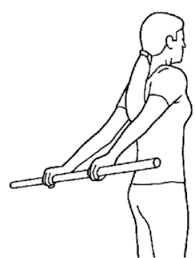
Shoulder Extension with cane :
Hold one end of cane in hand of the involved arm, another end with other hand.
Keep the elbow of involved arm straight and use other arm to push involved arm backward as shown.
Hold and repeat.
Hold end position for 10-15 seconds
Biceps stretch sitting on a chair:
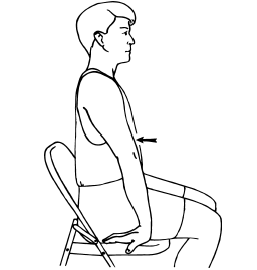
Begin with sitting on a chair with palms flat and fingers pointing backward.
Slowly lean backward until a stretch is felt in the front of your arm.
Hold the stretch for 10 seconds.
Repeat for 8 to 10 times.
Bilateral biceps stretch:
Begin with standing position arms straight and fingers interlaced.
Raise your arms overhead.
Hold the stretch for 10 seconds.
Repeat for 8 to 10 times
Repeat for 5-6 times.

Biceps stretch with tubing:
Begin with standing position arms forward, palms down. Hold a tubing in your hands as shown.
Sweep up and overhead then behind back with elbow straight.
Hold the stretch for 10 seconds.
Repeat for 8 to 10 times.

How to build biceps muscle?
To Build strong Biceps muscle following strengthening exercise are helpful. Regular exercise improve function of biceps muscle and build strong and muscular Biceps.
Strengthening exercise :
Bicep Strengthening Exercises – Intermediate:
Intermediate Bicep Strengthening Exercises should generally be performed 1 – 3 times per week provided they do not cause or increase pain. Ideally they should not be performed on consecutive days, to allow muscle recovery. As your bicep strength improves, the exercises can be progressed by gradually increasing the repetitions, number of sets or resistance provided they do not cause or increase pain.
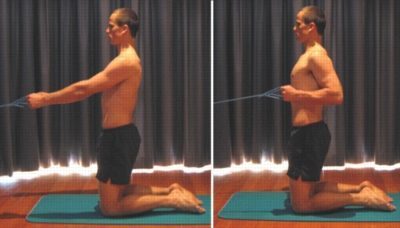
Resistance Band Bicep Curls:
Begin this bicep strengthening exercise with a resistance band under your feet and around your hands. back and elbows should be straight. Slowly bend your elbows against the resistance band tightening your biceps. Perform 3 sets of 10 repetitions as far as possible and be comfortable without pain.
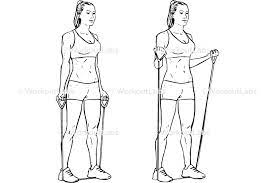
Resistance Band Bicep Curls with Extension:
Begin this bicep strengthening exercise holding a resistance band with your arms slightly behind your body and your elbows straight as demonstrated. Keeping your back straight and upper arms still, slowly bend your elbows against the resistance band tightening your biceps. Perform 3 sets of 10 repetitions as far as possible and be comfortable without pain.
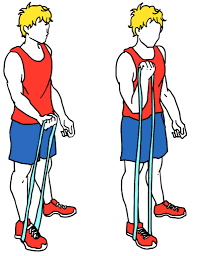
Clinical Importance
The Biceps Muscle is prone due to repetitive stress or overuse. Sports involving throwing, such as badminton and tennis, are common to over-stress tendons of the biceps and cause inflammation.
More serious conditions, for example, dislocation and rupture of the tendon of the long head of the biceps, are not uncommon across all age groups.
FAQs
The large, thick muscle on the ventral side of the upper arm is called the biceps brachii (BB), sometimes known as the biceps. A small head and a long head make up the Biceps muscle. The medial side of the biceps brachii has a short head, while the lateral side has a long head.
The biceps and triceps are two major muscle groups in the human body, specifically located in the upper arm. They play crucial roles in arm movement, strength, and functionality. The biceps brachii, commonly referred to as the biceps, is a muscle with two “heads” or points of origin. The triceps brachii, or triceps, is a three-headed muscle located on the back of the upper arm.
Upper Arm
The biceps are located on the front of the upper arm, between the shoulder and the elbow. They have two points of origin at the scapula (shoulder blade) and are inserted into the radius bone of the forearm. When these muscles contract, they allow you to bend your elbow and bring your hand closer to your shoulder.
The triceps have more potential for growth than the biceps because they are a bigger muscle group. The brachialis, an upper arm muscle that runs beneath the biceps, makes up the third group.

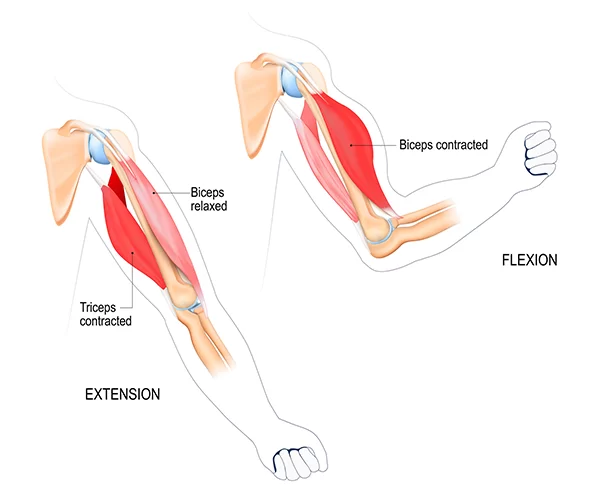
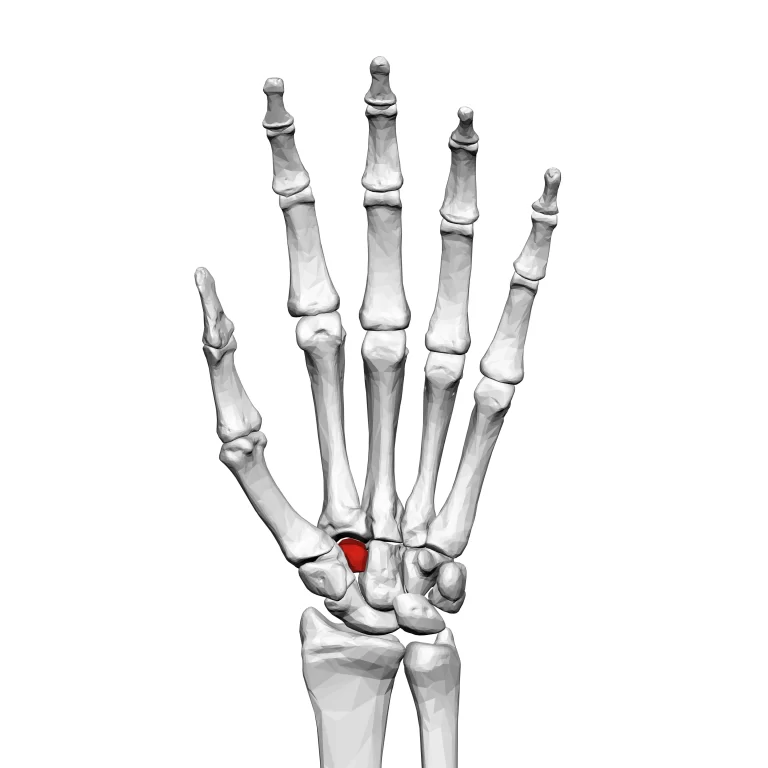
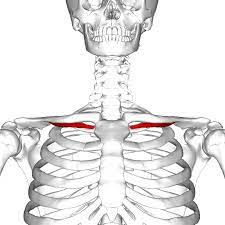
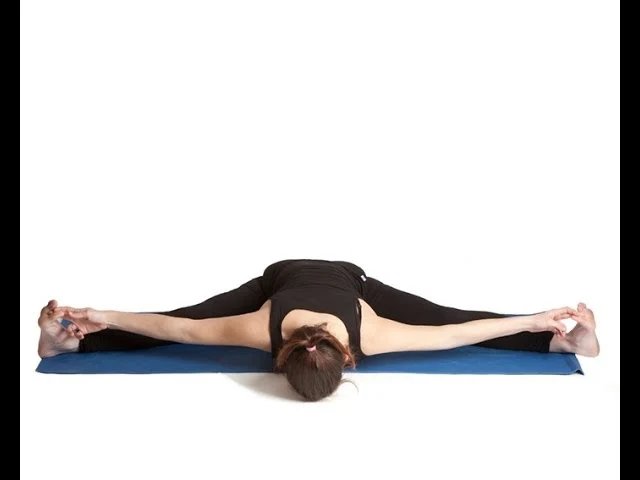
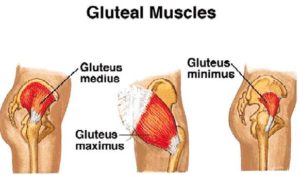

16 Comments